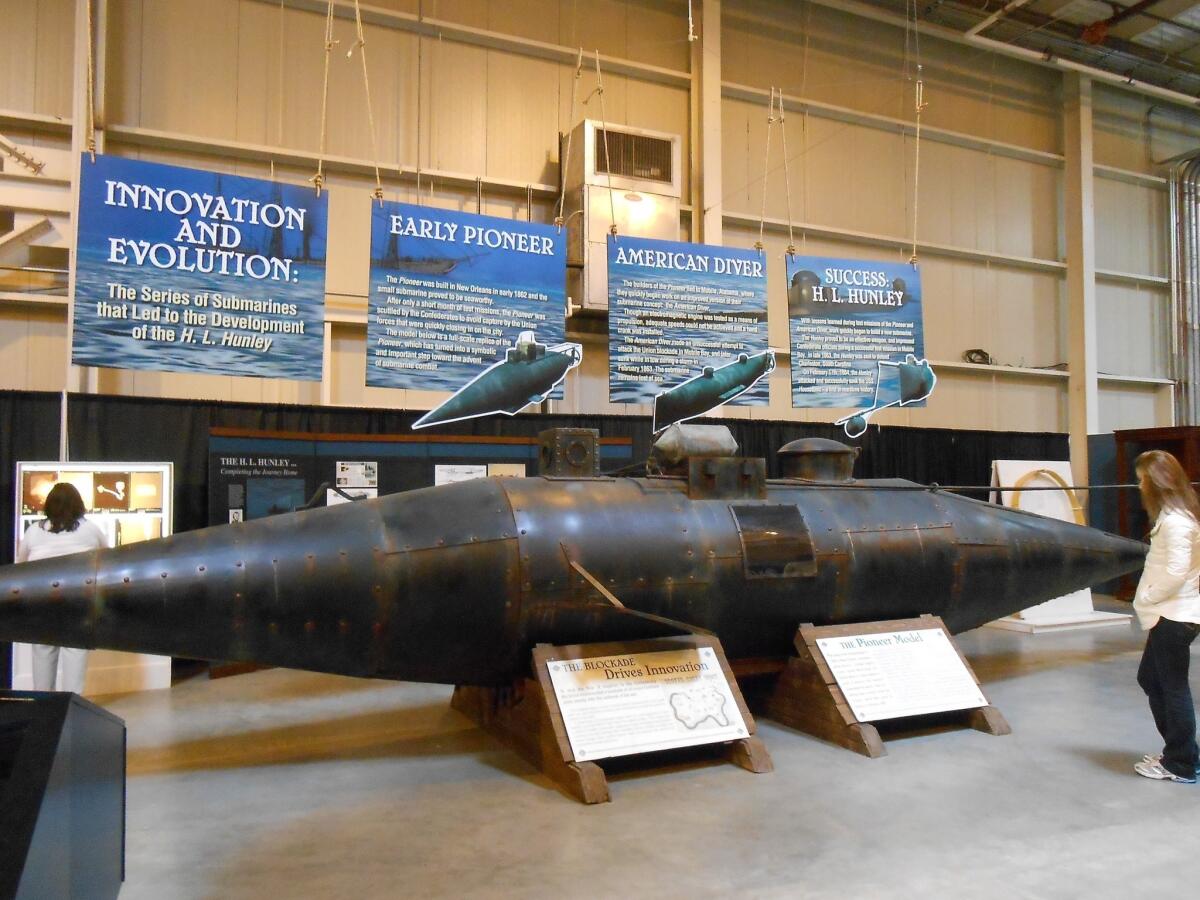Ft. Sumter and H.L. Hunley submarine part of Civil War history

CHARLESTON, S.C. — Two of the top destinations on a recent trip to Charleston — Ft. Sumter and the Confederacy’s H. L. Hunley submarine — transcend the label of “Civil War attraction.” These sites appeal to students of U.S. history, to devotees of military archives and to those who value peace over war.
After a 30-minute ferry trip from the city to the man-made island that is the site of Ft. Sumter, my tour group encountered park ranger Dennis Birr, who proved to be a combination of historian, carnival barker and motivational speaker. Aside from some gentle humor at the expense of the federal government, his oration centered on the facts: After federal forces tried to resupply the U.S. garrison at Sumter on April 12, 1861, Confederate forces attacked starting at 4:30 a.m. The barrage lasted 34 hours. U.S. forces surrendered on April 13, and a symbol was born.
Various attempts to retake and defend the five-sided fort left it in ruins. Parts of it have been repaired, but the facility, which is part of the National Park Service, has a very different look from the original, thanks partly to a huge concrete battery added during the Spanish-American War.
Many of my fellow ferry passengers reveled in the opportunity to examine the big guns found throughout the property. Some of them explored exhibits in the small museum in the middle of the site.
But the best place to contemplate Sumter’s iconic status is at its highest point, atop the museum structure. On this winter day it was windy, warm and peaceful — and difficult to imagine the furor that erupted when the U.S. flag was replaced with a Confederate banner.
Federal troops may have surrendered Ft. Sumter in short order, but the U.S. Navy successfully blockaded the Charleston harbor for much of the war, and the Confederacy was desperate to break the Union’s grip. The Hunley submarine, built in Mobile, Ala., and shipped to Charleston in August 1863, was designed to do just that.
The craft was almost 40 feet long, but the hull was only 4 feet, 3 inches high; its propeller was powered by crew members who turned a hand crank. One member of the crew was responsible for a bellows, which was supposed to ensure sufficient air to breathe.
On Feb. 17, 1864, the Hunley attacked the USS Housatonic, a sloop of war, with a torpedo. The Housatonic sank quickly. Then the Hunley disappeared, along with the eight men on board, lost until its discovery in the harbor in 1995.
Today the sub remains submerged in a conservation tank at a lab in the Warren Lasch Conservation Center. The sub is too delicate for the touch of hundreds of human hands that pass through during weekend tours, but visitors to the conservation center, which is north of the city’s historic district, can inspect a replica of the Hunley and displays with details of the craft and personal memorabilia that was recovered.
Researchers, scientists and federal and state employees continue to try to solve the puzzle of the Hunley: Why did it sink? How did its crew of eight die? The remains of the men were found near their stations — rather, than, say, the escape hatch — and their fate has transformed the sub from an artifact of the Confederacy into an unsolved mystery of national import.
Info: Ft. Sumter, https://www.nps.gov/fosu. Admission to the fort is free, but the boat ride to the fort costs $18 for adults, $16 for seniors (62 and older) and $11 for children (4-11). It leaves from Liberty Square and Patriots Point. The trip should be booked in advance at https://www.fortsumtertours.com or by calling (800) 789-3678. The Hunley, 1250 Supply St., North Charleston, https://www.hunley.org, can be toured 10 a.m.-5 p.m. Saturdays and noon-5 p.m. Sundays. Tickets cost $12 and can be reserved at (877) 448-6539 or at https://www.etix.com.
More to Read
Sign up for The Wild
We’ll help you find the best places to hike, bike and run, as well as the perfect silent spots for meditation and yoga.
You may occasionally receive promotional content from the Los Angeles Times.







